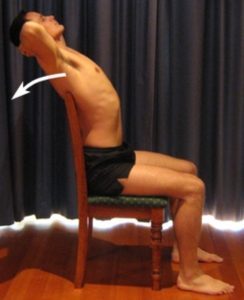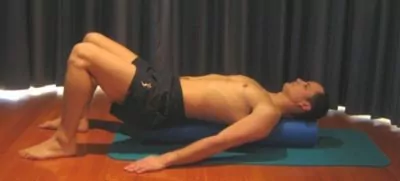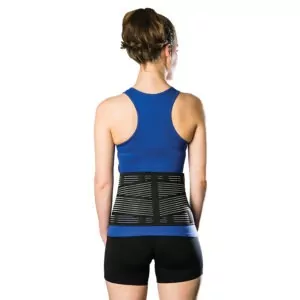Postural Exercises
Updated:
The following postural exercises are frequently prescribed in clinical practice to improve posture (particularly of the neck and upper back). Many of these exercises can also be used to help prevent posture related injuries by giving the body a break from poor postural positions during everyday activities. Optimal posture is an important component of injury prevention and athletic performance.
For optimal results, these postural exercises should generally be used in conjunction with appropriate physiotherapy treatment and maintaining optimal posture as much as possible in everyday life (or as close to this as possible provided there is no increase in symptoms). Pilates exercises which have an emphasis on maintaining optimal posture during exercises are a great adjunct to improving posture.
In general, optimal posture can be obtained by sitting or standing tall with your shoulders back and your chin tucked in as far as possible (ensuring your eyes and nose are facing forwards) and then relaxing a little (approximately 10 – 20%). Another good way of obtaining optimal posture is standing with your back to a wall with your heels, buttocks, shoulders and head in contact with the wall (eyes and nose facing forwards), then trying to maintain this posture with minimal muscular effort during everyday activities (such as sitting, driving, computer use, house work, sleeping etc.). For more information on obtaining optimal posture to supplement these postural exercises see our Posture article.

The following postural exercises are designed to improve flexibility of the joints and muscles of the body which when tight may encourage poor posture, whilst strengthening muscles that encourage optimal posture. You should discuss the suitability of these postural exercises with your physiotherapist prior to beginning them. Generally, you should begin with the Initial Exercises. Once these become too easy, gradually progress to the Intermediate and then Advanced Postural Exercises. As a general rule, the exercises should only be performed provided they do not cause or increase pain.
Initial Exercises
The following initial exercises should generally be performed 3 – 5 times daily provided they do not cause or increase pain.
Shoulder Blade Squeezes
Begin sitting or standing tall with your back and neck straight. Squeeze your shoulder blades together as far as you can go without pain and provided you feel no more than a mild to moderate stretch (figure 2). Hold for 5 seconds and repeat 10 times provided the exercise does not cause or increase symptoms.

Chin Tucks
Begin sitting or standing tall with your back and neck straight, and shoulders back slightly. Tuck your chin in as far as you can go without pain and provided you feel no more than a mild to moderate stretch (figure 3). Keep your eyes and nose facing forwards. Hold for 2 seconds and repeat 10 times provided the exercise does not cause or increase symptoms.

Extension over Chair
Begin sitting tall on an appropriate chair (the top of the back rest should end at the level of your mid back). Place your hands behind your neck and gently arch backwards over the chair, looking up towards the ceiling (figure 4). Move as far as you can go without pain and provided you feel no more than a mild to moderate stretch (ensuring you do not overbalance). Repeat 10 times provided the exercise does not cause or increase symptoms.

Thoracic Extension
Place the foam roller under your upper back as demonstrated (figure 5). Breathe normally keeping your back and neck relaxed. Hold this position for 15 – 90 seconds provided it is comfortable and does not cause pain.

Intermediate Exercises

Members Only ContentBecome a PhysioAdvisor Member to gain full access to this exclusive content. For more details see Become a Member. Already a member? Login Now
Advanced Exercises

Members Only ContentBecome a PhysioAdvisor Member to gain full access to this exclusive content. For more details see Become a Member. Already a member? Login Now
Postural Exercises at the Gym

Members Only ContentBecome a PhysioAdvisor Member to gain full access to this exclusive content. For more details see Become a Member. Already a member? Login Now
 Physiotherapy Products to Assist with Postural Exercises
Physiotherapy Products to Assist with Postural Exercises
Some of the most commonly recommended products by physiotherapist for patients with poor posture include:
To purchase physiotherapy products to assist with postural exercises and maintaining optimal spinal alignment click on one of the above links or visit the PhysioAdvisor Shop.
 Find a Physio for Postural Exercises
Find a Physio for Postural Exercises
Find a physiotherapist in your local area who is an expert in postural exercises, improving posture and associated injuries.
Injury Information
Click on the appropriate link below to view detailed injury information on some common injuries related to poor posture:
- Cervical Postural Syndrome
- Thoracic Postural Syndrome
- Lumbar Postural Syndrome
- Cervical Disc Bulge
- Thoracic Disc Bulge
- Lumbar Disc Bulge
- Cervicogenic Headache
 Recommended Reading
Recommended Reading
- Correct Posture
- Postural Taping
- Mobile Phone Ergonomics
- Ergonomic Computer Setup
- Bike Setup
- Choosing a School Bag
- Correct Lifting
- Before You Start Pilates
 Other Exercises
Other Exercises
- Basic Pilates Exercises
- Intermediate Pilates Exercises
- Advanced Pilates Exercises
- Upper Body Massage Ball Exercises
- Upper Body Foam Roller Exercises
- Basic Swissball Exercises
- Upper Back Flexibility Exercises
- Upper Back Strengthening Exercises
- Cardiovascular Exercise.
- Core Stability Exercises.
- Scapular Stability Exercises
Become a PhysioAdvisor Member

Link to this Page
If you would like to link to this article on your website, simply copy the code below and add it to your page:
<a href="https://physioadvisor.com.au/exercises/postural-exercises”>Postural Exercises – PhysioAdvisor.com</a><br/>PhysioAdvisor offers detailed physiotherapy information on progressive postural exercises designed to improve your posture and spinal alignment.
Return to the top of Postural Exercises.









